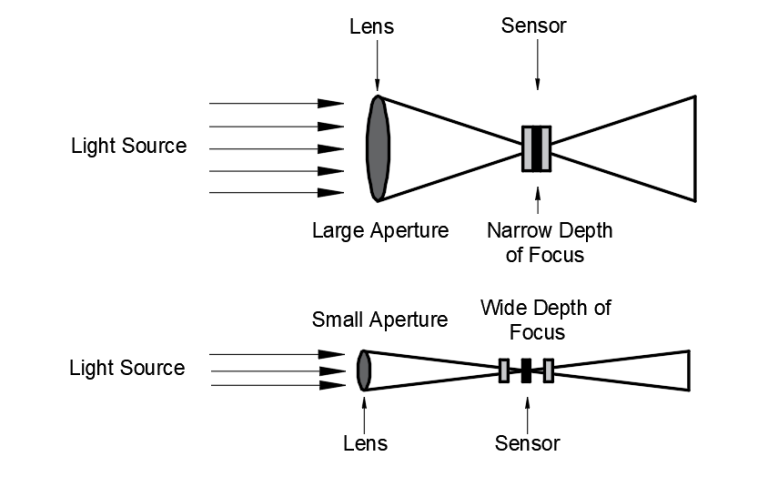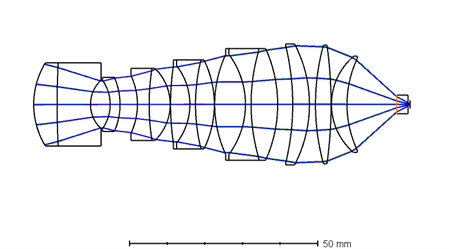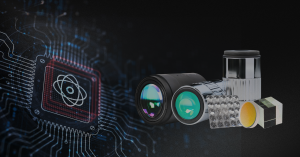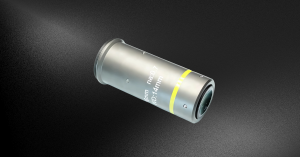Key Takeaways
- Objective lenses are essential in quantum computing for precise beam focusing, efficient fluorescence collection, and high-resolution qubit imaging.
- High numerical aperture boosts addressability and readout fidelity, while optimized working distance enables operation through vacuum or cryogenic interfaces.
- Wavelength-specific coatings, aberration correction, and window compensation preserve signal integrity.
- Vacuum and cryogenic compatibility, along with custom mechanical designs, ensure stability.
- Custom optics tailored to system wavelengths and geometry are typically required for high-fidelity, scalable quantum platforms.
Objective Lenses for Quantum Computing Systems
Objective lenses play a critical role in modern quantum computing platforms, enabling precise light delivery, efficient single-photon detection, and high-resolution imaging. Whether in neutral atom arrays, ion traps, or photonic qubit systems, these lenses are essential for system fidelity and scalability.
Why Objective Lenses Are Critical in Quantum Computing
Objective lenses in quantum computers are far more than imaging optics—they enable tight beam focusing, collect fluorescence for qubit readout, and impact the overall resolution of the quantum architecture. The right optical design can significantly influence quantum gate performance, photon throughput, and signal integrity.
Key Design Requirements for Quantum Objective Lenses
1. High Numerical Aperture (NA ≥ 0.6)
High-NA objective lenses are a cornerstone in quantum optics, enabling:
- Tight beam focusing for single-qubit addressing in neutral atom and ion trap systems
- Efficient fluorescence collection, boosting readout fidelity through increased photon capture
- Improved spatial resolution to distinguish and control individual atoms or ions
In systems using optical tweezers, for example, lenses with NA 0.6–0.8 can achieve sub-micron beam waists necessary for precise gate operations. Fluorescence collection efficiency scales with NA², making high NA essential for experiments limited by photon count.

2. Optimized Working Distance (WD)
Objective lenses must focus through vacuum chamber windows or cryogenic interfaces. Engineering considerations include:-
- Working distances of 2–10 mm to accommodate vacuum viewports or cold shields
- Maintaining diffraction-limited performance across that distance
- Compatibility with external optical setups, including mirrors or beam combiners

3. Wavelength-Specific Performance
Quantum systems rely on atomic transitions at specific wavelengths. Examples include:- 780 nm for Rubidium
- 852 nm for Cesium
- 637 nm for NV centers in diamond
- 729 nm for Calcium ions
4. Aberration Correction and Window Compensation
- Spherical and chromatic aberrations must be corrected to retain beam shape and minimize qubit crosstalk
- Imaging through vacuum windows (e.g., fused silica, sapphire) requires custom window-compensated designs
- For dual-wavelength systems, apochromatic correction ensures consistent focus for both trap and imaging lasers
Mechanical and Environmental Considerations
Vacuum Compatibility
Objective lenses must operate in high or ultra-high vacuum (HV/UHV) environments. Key features include:- Low-outgassing materials and adhesives
- Metal housings made from titanium or stainless steel
- Cleanroom-compatible fabrication and vacuum-bake readiness
Thermal and Cryogenic Stability
Quantum systems operating at cryogenic temperatures require:- Low thermal expansion materials for minimal focus drift
- Stable mechanical design under repeated thermal cycling
Customization Requirements for Quantum Platforms
Engineers rarely use off-the-shelf optics for quantum computing. Custom options typically include:
- Tailored focal lengths and working distances
- Custom mounting interfaces (threaded barrels, flanges, or dovetails)
- AR coatings for specific atomic transitions
Integration-ready designs for piezo stages, fiber couplers, or optomechanical assemblies
Validation and Procurement Considerations
Before integrating an objective lens into a quantum computing system, engineers should verify:
- Interferometric wavefront error (≤ λ/10 RMS)
- MTF (Modulation Transfer Function) at operational frequencies
- Surface quality (e.g., 10-5 scratch-dig) and coating durability
- RoHS compliance and ITAR/EAR status
- Availability of prototypes or short-turnaround custom builds
- Interferometric wavefront error (≤ λ/10 RMS)
Conclusion
Objective lenses for quantum computing must meet stringent optical and mechanical demands. High NA, wavelength-specific optimization, vacuum compatibility, and system-level integration all play critical roles in performance.
Whether you’re building a neutral atom quantum processor, developing ion-based platforms, or exploring photonic qubits, custom-engineered optics are essential for achieving high-fidelity, scalable quantum operations.
Partner with Avantier to ensure your platform performs reliably at the frontiers of science and technology.
Related Content
GREAT ARTICLE!
Share this article to gain insights from your connections!







